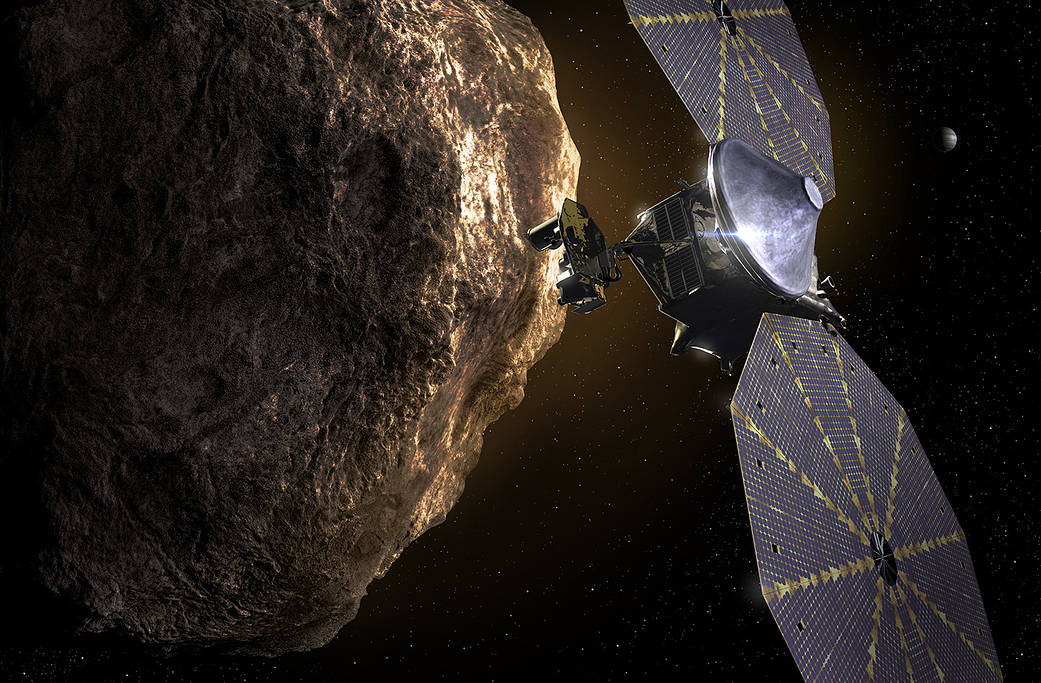
Lucy will explore the Trojan asteroids with a suite of remote sensing instruments:
- L’Ralph – an instrument provided by NASA’s Goddard Space Flight Center in Greenbelt, Maryland, that consists of two parts:
L’Ralph Linear Etalon Imaging Spectral Array (LEISA), an infrared imaging spectrometer that will reveal the absorption lines that serve as the fingerprints for different silicates, ices and organics that may be on the surface of the Trojan asteroids, and
L’Ralph Multi-spectral Visible Imaging Camera (MVIC), that will take color images of the Trojans to help determine their composition and look for indications of surface activity.
- Lucy Long Range Reconnaissance Imager (L‘LORRI) – a high resolution, panchromatic visible camera made by the Johns Hopkins University Applied Physics Laboratory in Laurel, Maryland. L’LORRI will provide the most detailed images of the surface of the Trojan asteroids.
- Lucy Thermal Emission Spectrometer (L’TES) – an instrument built by Arizona State University in Tempe, Arizona, that will measure the surface temperature of the Trojan asteroids by observing the thermal infrared spectrum, helping to understand the physical properties of the surface material.
Additionally, the navigation cameras will be used to determine the shapes of the Trojan asteroids. The High Gain Antenna will be used to both communicate with Earth and to carry out radio science experiments to measure the masses of the Trojan asteroids. Lucy Radio science is led by a team from the University of Cologne, Germany.
